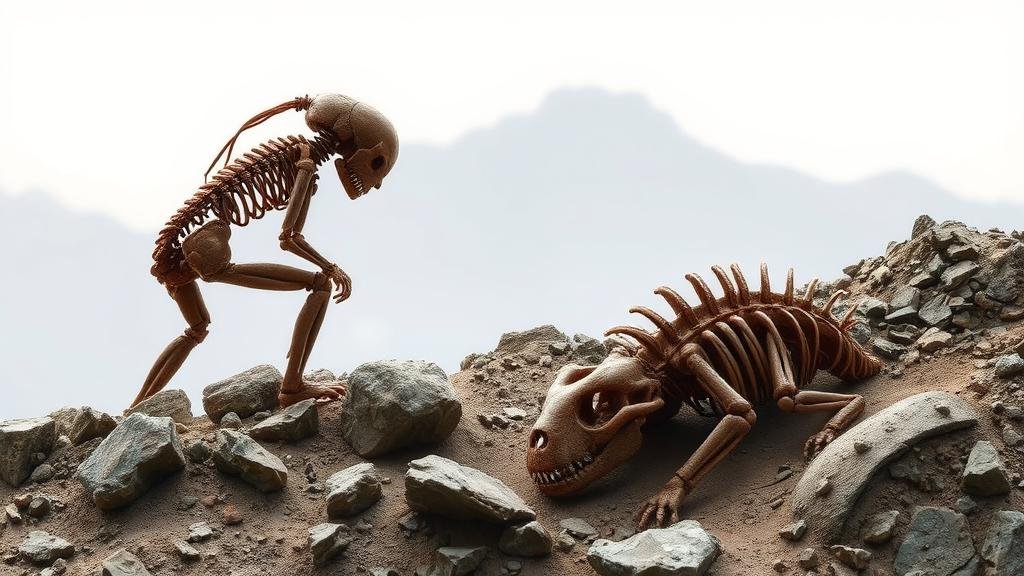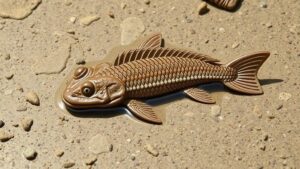Prompting AI to Identify Overlaps Between Historical Folklore and Fossil Finds
Prompting AI to Identify Overlaps Between Historical Folklore and Fossil Finds
Artificial Intelligence (AI) has revolutionized various fields, including history, archaeology, and anthropology, by enabling researchers to discover connections that may have previously been overlooked. One intriguing area of research is the exploration of how historical folklore might intersect with fossil discoveries. This article investigates the potential for AI to identify these overlaps, offering insights into both historical narratives and scientific findings.
The Importance of Folklore in Understanding Ancient Cultures
Folklore serves as a repository of knowledge reflecting the beliefs, values, and experiences of various cultures throughout history. Folklore consists of myths, stories, and legends that often incorporate elements of the natural world, including creatures that may have parallels in paleontological records. For example, many Native American tribes have legends involving large creatures, such as “Thunderbirds,†which some researchers propose may be linked to fossilized pterosaur remains found in North America.
Case Study: The Griffin in Ancient Greece
The griffin, a legendary creature with the body of a lion and the head and wings of an eagle, was prominent in Ancient Greek mythology. Interestingly, fossils of large theropod dinosaurs like the therizinosaurus, which have strikingly bird-like features, have been uncovered in what is now Mongolia and China. existence of such fossils could lend credence to the notion that sightings of these ancient animals inspired the griffin legend, highlighting the potential overlap between folklore and paleontological evidence.
AI as a Tool for Uncovering Connections
AI technologies, particularly natural language processing (NLP) and machine learning algorithms, can address the complex task of identifying connections between disparate datasets–namely, folklore texts and fossil records. Researchers can input vast collections of folklore from various cultures and cross-reference them with geological and paleontological datasets.
Methodology
- Data Collection: Aggregating folklore narratives and academic publications related to fossil discoveries.
- Natural Language Processing: Employing NLP techniques to extract themes, motifs, and keywords from folklore.
- Machine Learning: Utilizing machine learning models to analyze patterns and detect correlations between folklore motifs and fossil data.
Case Study: Dinosaurs in Asian Folklore
In Asian cultures, particularly in China, there are numerous tales of “dragon†creatures that resemble the descriptions of theropods. The discovery of dinosaur fossils in the region has prompted hypotheses that ancient people may have encountered these remains and subsequently crafted legends around them. AI analysis of dragon descriptions could uncover specific attributes paralleling theropod fossils, such as limb structure and size, offering deeper understanding of these mythical narratives.
Challenges and Limitations
Despite the potential benefits of AI in this line of research, there are notable challenges. The highly interpretive nature of folklore means that establishing concrete connections can be challenging. Also, the cultural context of folklore must be considered carefully, as each narrative is steeped in its own historical and sociopolitical background.
- Data Diversity: The vast range of cultural expressions makes standardization difficult.
- Interpretative Variability: Different interpretations of folklore can lead to differing conclusions regarding potential overlaps.
Real-World Applications
The exploration of folklore and fossil overlaps via AI has significant implications for multiple fields, including education, museum curation, and cultural preservation. For example, museums could integrate AI findings into exhibits, providing contextually relevant information that enhances visitor engagement. Educational programs might utilize this research to teach students about the intersection of science and humanities, fostering interdisciplinary appreciation.
Conclusion and Actionable Takeaways
AI represents a groundbreaking opportunity for researchers to uncover the links between historical folklore and fossil findings, providing insights that deepen our understanding of both the past and the narratives that have shaped human culture. Future research should focus on refining AI algorithms for greater accuracy and establishing collaborations between folklorists and paleontologists to ensure comprehensive interpretations.
- Encourage interdisciplinary collaboration among historians, folklorists, and paleontologists.
- Invest in developing robust AI frameworks capable of analyzing complex cultural datasets.
- Promote awareness of the historical significance of folklore as a scientific resource.



